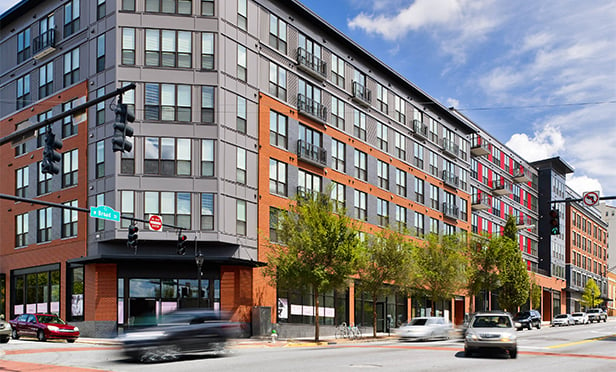According to a recent article from GlobeSt.com sister publication, ALM's BenefitsPro.com, if you're in one of those restaurant-crazed cities such as San Francisco, New York or Los Angeles, you know that you've seen a lot more tattooed young servers and sous chefs on the streets and in the bistros in the past few years.
They are among the workers driving a steady jobs growth in the US. And while those jobs may be exciting and, sometimes, rewarding, in general the increase in those types of jobs is not a particularly good sign for the nation's economy.
Except that it suggests that other people have more discretionary dollars to spend on dining out.
Related: 10 states with the best economies
A study from The Atlantic's CityLab confirms that US jobs are increasing, but that the increases tend to be concentrated in a few geographic areas and that the fastest-growing positions do not pay very well.
CityLab culled data from a data collection company, Emsi, to develop its economic growth report. Among the findings:
- The U.S. economy added more than 12 million jobs between 2011 and 2016, a healthy 9% increase.
- Low-wage jobs outpaced high-wage jobs, 4.5 million to 4.1 million.
- 3.5 million mid-wage jobs were also created.
- The current breakdown of all jobs in 2016 had high-wage jobs slightly ahead of low-wage jobs by a 37% to 34% margin, with the remainder (29%) labeled mid-wage jobs.
- Thus high-wage jobs are still in the lead, but low-wage positions are catching up fast.
Then, when the study broke out regional growth, it found areas of high growth tended to “cluster on the coasts,” with big spikes in Los Angeles, the Bay Area, Portland (but not Seattle), Florida and the Carolinas.
To read more about the top 10 metro areas for growth tends to support this coastal growth theory, check out the full article by clicking here.
According to a recent article from GlobeSt.com sister publication, ALM's BenefitsPro.com, if you're in one of those restaurant-crazed cities such as San Francisco,
They are among the workers driving a steady jobs growth in the US. And while those jobs may be exciting and, sometimes, rewarding, in general the increase in those types of jobs is not a particularly good sign for the nation's economy.
Except that it suggests that other people have more discretionary dollars to spend on dining out.
Related: 10 states with the best economies
A study from The Atlantic's CityLab confirms that US jobs are increasing, but that the increases tend to be concentrated in a few geographic areas and that the fastest-growing positions do not pay very well.
CityLab culled data from a data collection company, Emsi, to develop its economic growth report. Among the findings:
- The U.S. economy added more than 12 million jobs between 2011 and 2016, a healthy 9% increase.
- Low-wage jobs outpaced high-wage jobs, 4.5 million to 4.1 million.
- 3.5 million mid-wage jobs were also created.
- The current breakdown of all jobs in 2016 had high-wage jobs slightly ahead of low-wage jobs by a 37% to 34% margin, with the remainder (29%) labeled mid-wage jobs.
- Thus high-wage jobs are still in the lead, but low-wage positions are catching up fast.
Then, when the study broke out regional growth, it found areas of high growth tended to “cluster on the coasts,” with big spikes in Los Angeles, the Bay Area, Portland (but not Seattle), Florida and the Carolinas.
To read more about the top 10 metro areas for growth tends to support this coastal growth theory, check out the full article by clicking here.
Continue Reading for Free
Register and gain access to:
- Breaking commercial real estate news and analysis, on-site and via our newsletters and custom alerts
- Educational webcasts, white papers, and ebooks from industry thought leaders
- Critical coverage of the property casualty insurance and financial advisory markets on our other ALM sites, PropertyCasualty360 and ThinkAdvisor
Already have an account? Sign In Now
© 2024 ALM Global, LLC, All Rights Reserved. Request academic re-use from www.copyright.com. All other uses, submit a request to [email protected]. For more information visit Asset & Logo Licensing.









